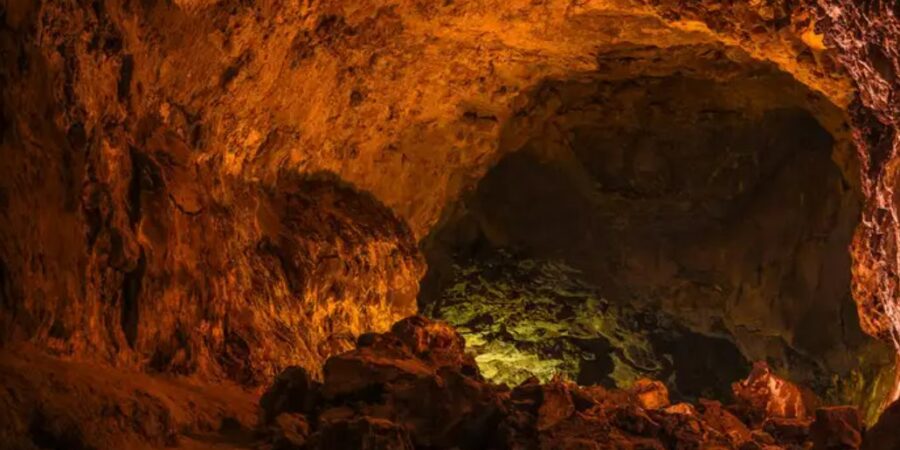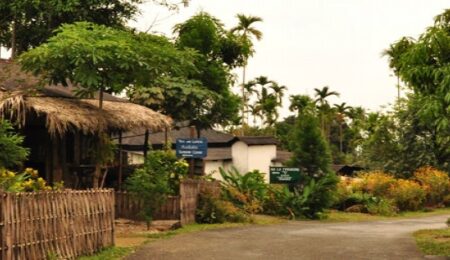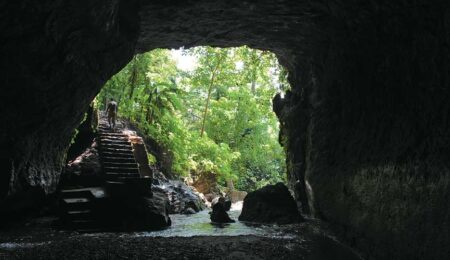 Amidst the verdant landscapes of Meghalaya, a state in northeastern India, lies a hidden subterranean gem that beckons explorers and nature enthusiasts – Krem Mawmluh Cave. Renowned for its grandeur, geological formations, and rich biodiversity, this cave is a testament to the extraordinary wonders beneath the surface.
Amidst the verdant landscapes of Meghalaya, a state in northeastern India, lies a hidden subterranean gem that beckons explorers and nature enthusiasts – Krem Mawmluh Cave. Renowned for its grandeur, geological formations, and rich biodiversity, this cave is a testament to the extraordinary wonders beneath the surface.
Situated in the village of Mawmluh near Cherrapunjee, Krem Mawmluh Cave is one of Meghalaya’s most captivating and extensive caves. It forms a part of the vast Khasi Hills Cave System, which encompasses a network of interconnected caves. Krem Mawmluh Cave’s unique features, geological formations, and historical significance make it an enticing destination for adventurers and researchers.
As one ventures into the depths of Krem Mawmluh Cave, a mesmerizing world unfolds. The cave’s entrance leads visitors into a labyrinth of passages, chambers, and galleries stretching several kilometers beneath the Earth’s surface. The complex network of interconnecting tunnels adds an air of mystery and intrigue to the exploration, inviting visitors to discover its secrets.
Krem Mawmluh Cave boasts a stunning array of geological formations sculpted over millions of years. Stalactites, stalagmites, flowstones, and columns adorn the cave, creating a breathtaking spectacle that captivates the senses. The slow deposition of mineral-rich water has given rise to delicate and intricate formations that cling to the cave’s ceilings and rise majestically from the ground. Explorers are treated to a visual feast as they witness the mesmerizing shapes and textures nature has meticulously crafted over time.
Krem Mawmluh is a mysterious cave located in Meghalaya, India. It is one of the deepest and longest caves in the world and one of the most difficult to access. The cave is so remote that it is only accessible by a narrow path. A group of British cavers discovered the cave in the early 1990s. Since then, only a handful of people have been able to reach the bottom of the cave. The journey is extremely dangerous and has claimed the lives of two experienced cavers.
The cave is named after the village of Mawmluh, located nearby. “krem” means “cave” in the local Khasi language. Krem Mawmluh is located in the Jaintia Hills, a mountain range running through Meghalaya. The cave is at an altitude of 1,750 meters (5,740 feet). The entrance to the cave is a small, narrow opening that is just big enough for a person to squeeze through. From there, the cave descends rapidly, with steep drops and narrow passages.
The cave is over 9 kilometers (5.6 miles) long and has a total depth of 1,000 meters (3,280 feet). The cave’s main chamber is known as “The Cathedral” and is one of the largest known cave chambers in the world. The journey to the bottom of the cave is extremely difficult and dangerous. The cave is pitch black, and there are no handholds or footholds. The only way to progress is by abseiling (rappelling) down the sheer drops.
Due to the extreme difficulty of the journey, only a few people have ever reached the bottom of the cave. In 2010, a team of British cavers became the first to successfully map the cave. The cave is home to a number of unique species of animals, including blind fish, cave crickets, and glow-in-the-dark fungi.
The cave’s grandeur is accentuated by its colossal chambers. Expansive spaces within Krem Mawmluh Cave leave visitors in awe of the sheer magnitude of the underground world. Some chambers are so vast that they can accommodate large groups of people, immersing them in an atmosphere of awe and wonder. The echoes of footsteps and whispers serve as reminders of the cave’s immensity and the mysteries that lie within its depths.
Beyond its geological marvels, Krem Mawmluh Cave is home to a thriving ecosystem. The cave’s dark and humid environment protects numerous species, including bats, insects, and invertebrates that have adapted to the subterranean habitat. Bats, in particular, play a crucial ecological role within the cave, aiding in pollination, seed dispersal, and insect control. Visitors who navigate the cave may catch glimpses of these remarkable creatures as they flutter through the darkness, adding to the sense of adventure and intrigue.
Scientific exploration of Krem Mawmluh Cave has yielded valuable insights into the Earth’s history and the region’s geological processes. Researchers and geologists study the cave’s formations, sediments, and fossil records to unravel the secrets of the past. The findings within the cave provide valuable clues about ancient climates, ecosystems, and the region’s evolution over time.
Krem Mawmluh Cave also holds cultural and historical significance. Local communities in Meghalaya have a deep spiritual connection with caves, often associating them with mythical tales and cultural traditions. Krem Mawmluh Cave has witnessed centuries of human presence, serving as a shelter and a place of worship for indigenous communities. Explorers may encounter ancient artifacts, markings, or remnants of rituals, showcasing the cave’s cultural importance and the deep connection between humans and these mystical underground realms.
Preserving the delicate ecosystem and cultural heritage of Krem Mawmluh Cave is paramount. Conservation efforts, responsible tourism practices, and community involvement are vital in safeguarding the cave and its surroundings. Authorities and local communities work hand in hand to ensure sustainable exploration, minimize human impact, and raise awareness about the cave’s ecological and cultural significance.
In conclusion, Krem Mawmluh Cave stands as a testament to the geological wonders and hidden treasures beneath Meghalaya’s surface. Its awe-inspiring formations, vast chambers, and thriving ecosystem make it a destination that enchants and captivates all who dare to explore its depths. As we continue to appreciate the beauty and significance of Krem Mawmluh Cave, let us embrace the responsibility of preserving this remarkable natural and cultural heritage for future generations to marvel at and cherish.





